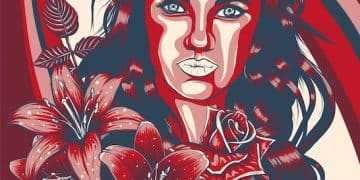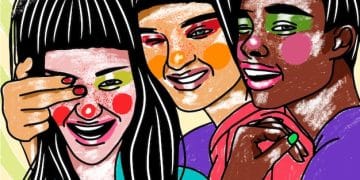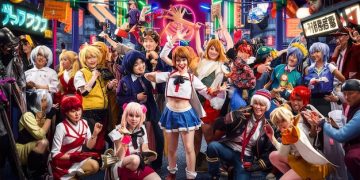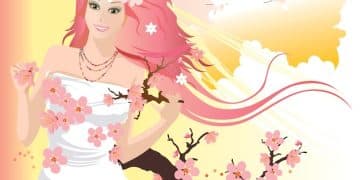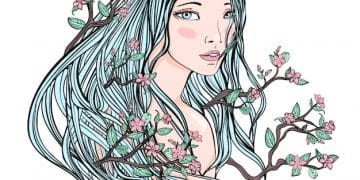Unveiling the Magic: A Deep Dive into Shojo Manga
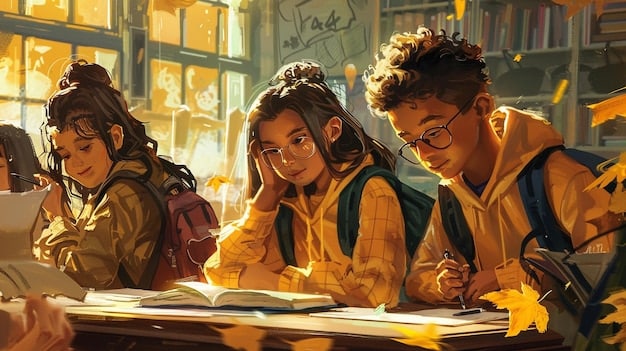
Shojo manga, aimed primarily at a young female audience, encompasses a diverse range of storytelling, art styles, and themes, offering unique perspectives on romance, friendship, and self-discovery within the vibrant world of Japanese comics.
Dive into the enchanting realm of shojo manga, a world brimming with heartfelt stories, captivating characters, and stunning art. Explore the themes, trends, and timeless classics that define this beloved genre, predominantly aimed at a young female audience but enjoyed by many across genders and ages.
What is Shojo Manga? A Genre Overview
Shojo manga, directly translated to “girls’ comics,” represents a specific demographic in the world of Japanese manga. It’s more than just comics for girls; it’s a genre that explores the unique experiences and perspectives of young women through heartfelt storytelling and diverse art styles.
The core of shojo manga often revolves around themes of romance, friendship, self-discovery, and personal growth. These stories frequently feature strong female protagonists navigating the complexities of adolescence, social relationships, and their evolving identities.
Historical Roots of Shojo Manga
The roots of shojo manga can be traced back to the early 20th century. It initially emerged as a subgenre within general-audience manga before gradually evolving into its own distinct category. Early examples focused on simple narratives tailored to children, but the genre began to mature and reflect deeper emotional complexities over time.
Key figures and pioneering artists played a pivotal role in shaping the landscape of shojo manga. Their innovative storytelling techniques and expressive character designs laid the foundation for the diverse and captivating genre we know today.
Defining Characteristics of Shojo Manga
Several characteristics define shojo manga and differentiate it from other genres. The most prominent is the focus on emotional depth and character development. Shojo manga often delves into the inner lives of its characters, exploring their feelings, motivations, and relationships with others.
Visually, shojo manga is recognizable by its emphasis on expressive character designs, often featuring large, sparkling eyes and intricate details. The use of visual cues like floral backgrounds and symbolic imagery further enhances the emotional impact of the storytelling.
- Emotional Depth: Deep exploration of character feelings and motivations.
- Expressive Art Style: Detailed character designs with emphasis on eyes and expressions.
- Thematic Focus: Themes of romance, friendship, self-discovery, and personal growth.
- Target Audience: Primarily aimed at young female readers, but enjoyed by a broad audience.
Shojo manga remains a dynamic and influential genre within the broader world of manga. Its ability to resonate with readers on an emotional level continues to drive its popularity and relevance, capturing the hearts of audiences across generations.
Iconic Shojo Manga Series: Timeless Classics
Shojo manga is home to a wealth of iconic series that have captivated readers for decades. These timeless classics have not only defined the genre but also influenced countless subsequent works. Exploring these series provides insight into the genre’s evolution and its enduring appeal.
These series have become cultural touchstones, shaping the perceptions and preferences of readers while reflecting the broader social and cultural trends throughout their publication.
“Fruits Basket” by Natsuki Takaya
“Fruits Basket” tells the story of Tohru Honda, an orphaned high school student who discovers that the Soma family is possessed by the spirits of the Chinese zodiac animals. This series has been lauded for its emotional depth, exploration of family dynamics, and themes of healing and acceptance. The heartwarming narrative and relatable characters have made “Fruits Basket” a beloved classic.
Takaya’s masterful storytelling weaves together humor, romance, and drama to create a compelling narrative that resonates with readers of all ages. The series’ exploration of trauma and recovery adds a layer of depth that elevates it beyond typical shojo fare.
“Sailor Moon” by Naoko Takeuchi
“Sailor Moon” is a groundbreaking series that revolutionized the magical girl genre. The story follows Usagi Tsukino, a clumsy and ordinary schoolgirl who transforms into Sailor Moon and teams up with other Sailor Guardians to protect the Earth from evil. “Sailor Moon” is celebrated for its empowering message, colorful characters, and action-packed storylines.
Takeuchi’s innovative approach to the magical girl concept, combining elements of romance, action, and comedy, paved the way for numerous subsequent series. The series’ emphasis on friendship, teamwork, and female empowerment continues to inspire readers.
“Ouran High School Host Club” by Bisco Hatori
“Ouran High School Host Club” is a comedic and heartwarming series that follows Haruhi Fujioka, a scholarship student at the prestigious Ouran Academy who accidentally stumbles upon the school’s host club. Pretending to be a boy to fit in, Haruhi must navigate the eccentric personalities of the host club members while trying to keep her true identity a secret. “Ouran High School Host Club” is praised for its humor, charming characters, and exploration of gender roles.
- Gender Roles: Explores and subverts traditional gender roles with humor and wit.
- Charming Characters: Features a diverse cast of eccentric and lovable characters.
- Humor: Blends comedic elements with heartwarming moments.
Hatori’s witty dialogue and creative character designs have made “Ouran High School Host Club” a fan favorite. The series’ lighthearted tone and focus on friendship and acceptance make it a delightful read.
These iconic shojo manga series represent the breadth and depth of the genre. Their enduring popularity is a testament to their ability to connect with readers on an emotional level and provide them with stories that are both entertaining and meaningful. These series have left an indelible mark on the world of manga, inspiring countless creators and captivating audiences for generations.
Modern Shojo Manga: Exploring New Themes
While the classic shojo manga series continue to resonate with readers, modern shojo manga is pushing the boundaries of the genre by exploring new themes and addressing contemporary issues. These series often feature diverse characters, complex relationships, and narratives that reflect the challenges and aspirations of young women in today’s world.
Exploring these emerging trends and fresh perspectives provides a glimpse into the evolving nature of shojo manga and its continued relevance in the lives of its readers.
Diversity and Representation in Modern Shojo Manga
Modern shojo manga is increasingly embracing diversity and representation in its characters and storylines. Series are now featuring characters from various ethnic backgrounds, sexual orientations, and gender identities. This shift towards inclusivity reflects a broader societal movement towards greater understanding and acceptance.
By showcasing diverse experiences and perspectives, these series are helping to create a more inclusive and representative media landscape for young readers. These stories allow readers from marginalized communities to see themselves reflected in the media they consume.
Addressing Contemporary Issues
Modern shojo manga is tackling a range of contemporary issues, including mental health, social media addiction, and gender inequality. These series provide a platform for young readers to explore these complex topics and engage in meaningful conversations.
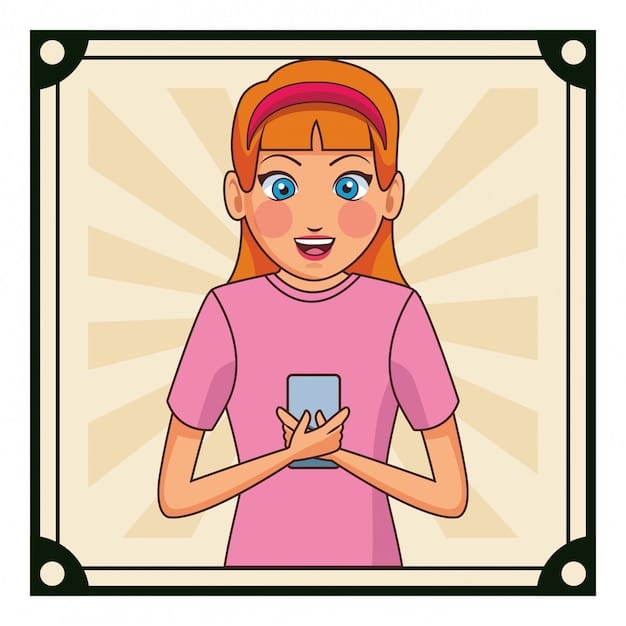
By addressing these issues head-on, modern shojo manga is helping to empower young readers and promote critical thinking. The courageous approach fosters understanding and encourages readers to navigate the complexities of the modern world with greater awareness.
Subgenres and Hybridization
Modern shojo manga is also seeing a rise in subgenres and hybridization with other genres. Series are blending elements of fantasy, science fiction, and horror with traditional shojo themes, creating unique and innovative narratives.
- Fantasy: Incorporates magical elements and fantastical worlds.
- Science Fiction: Explores futuristic themes and technological advancements.
- Horror: Blends suspense and fear with shojo elements.
This experimentation with subgenres is expanding the appeal of shojo manga and attracting a wider audience. These hybrid narratives offer fresh and imaginative takes on classic shojo themes, offering readers exciting new experiences.
Modern shojo manga represents a vibrant and evolving genre that continues to push boundaries and challenge conventions. Its willingness to embrace diversity, address contemporary issues, and experiment with subgenres ensures that it remains relevant and engaging for readers of all ages. The genre’s commitment to reflecting the experiences of young women in the modern world ensures its continued relevance and impact in the years to come.
The Art Styles of Shojo Manga: A Visual Journey
The art styles of shojo manga are as diverse and captivating as the stories they tell. From delicate and romantic to bold and dynamic, the visual aesthetics of shojo manga play a crucial role in conveying emotions, enhancing storytelling, and creating a unique reading experience.
Understanding the different styles and techniques employed by shojo manga artists provides deeper appreciation for the genre’s artistic merit and its ability to connect with readers on a visual level.
Classic Shojo Art: Elegance and Emotion
Classic shojo art is characterized by its elegance, grace, and emphasis on emotional expression. Artists often employ delicate lines, intricate details, and soft color palettes to create a romantic and ethereal atmosphere. The eyes of the characters are often large and exaggerated, serving as windows to their souls and conveying a wide range of emotions.
The use of floral backgrounds, sparkling effects, and flowing hair further enhances the romantic and dreamy quality of classic shojo art. These visual cues create an immersive experience for the reader, drawing them deeper into the emotional world of the characters.
Modern Shojo Art: Diversity and Experimentation
Modern shojo art is more diverse and experimental than its classic counterpart. Artists are pushing the boundaries of traditional shojo aesthetics by incorporating new techniques, styles, and influences. Some artists are embracing more realistic proportions and detailed backgrounds, while others are experimenting with bold colors, dynamic angles, and unconventional designs.
This experimentation reflects a broader trend in the manga industry, where artists are increasingly blending different styles and influences to create unique and innovative visual narratives. The diverse expressions contribute to the ongoing evolution which allows for greater artistic experimentation.
Key Elements of Shojo Art Styles
Despite the diversity of shojo art styles, certain elements remain consistent across the genre. These elements contribute to the overall aesthetic and help define the unique visual identity of shojo manga.
- Expressive Eyes: Large, detailed eyes that convey a wide range of emotions.
- Flowing Hair: Intricately drawn hair that adds to the elegance and grace of the characters.
- Floral Backgrounds: The use of floral motifs to create a romantic and dreamy atmosphere.
- Symbolic Imagery: Symbols and metaphors used to enhance the emotional impact of the story.
The convergence of these elements provides a visual language that is instantly recognizable and allows readers to connect with the stories on a deeper level. These elements, although varied, create a cohesive bond across shojo manga.
The art styles of shojo manga are a crucial component of the genre’s enduring appeal. Whether it’s the elegance of classic shojo art or the diversity of modern styles, the visual aesthetics of shojo manga play a vital role in conveying emotions, enhancing storytelling, and creating a captivating reading experience.
Shojo Manga’s Impact on Culture and Society
Shojo manga’s influence extends far beyond the world of comics. The genre has had a significant impact on culture and society, shaping perceptions of gender, relationships, and identity, particularly among young women. Its stories and characters have resonated with readers around the world, inspiring creativity, promoting empathy, and fostering a sense of community.
Understanding shojo manga’s cultural and societal impact provides insight into its enduring legacy and its role in shaping the lives of its readers.
Empowering Female Characters
One of the most significant contributions of shojo manga is its portrayal of empowered female characters. Unlike many other media forms, shojo manga often features female protagonists who are strong, intelligent, and independent. These characters challenge traditional gender roles and inspire young women to pursue their dreams and ambitions.
By showcasing diverse female characters with agency and autonomy, shojo manga is helping to redefine perceptions of femininity and empowering young women to embrace their own unique strengths and potential.
Promoting Empathy and Understanding
Shojo manga’s focus on emotional depth and character development promotes empathy and understanding among its readers. By exploring the inner lives and relationships of its characters, shojo manga encourages readers to connect with others on a deeper level and to appreciate the complexities of human experience.
This emphasis on empathy and understanding can help to break down barriers, foster tolerance, and create a more compassionate society. These themes enhance emotional development and interpersonal relationship skills.
Inspiring Creativity and Artistic Expression
Shojo manga has inspired countless readers to express their creativity through art, writing, and cosplay. The genre’s unique visual aesthetics and imaginative storytelling have sparked the imaginations of young people around the world, leading them to create their own works of art and to participate in the vibrant shojo manga fandom.
This creative expression not only provides a means of self-discovery but also fosters a sense of community among fans of the genre. Community engagement enhances social skills and fosters a sense of belonging.
Shojo manga’s impact on culture and society is undeniable. From its portrayal of empowered female characters to its promotion of empathy and understanding, the genre has played a significant role in shaping the lives of its readers and influencing broader cultural trends.
How to Get Started with Shojo Manga
For those new to the world of shojo manga, getting started can seem overwhelming. The genre is vast and diverse, with a wide range of series, art styles, and themes to choose from. However, with a little guidance, anyone can discover the joys of reading shojo manga.
By exploring recommended series, understanding the genre’s conventions, and accessing available resources, newcomers can embark on their own shojo manga adventure.
Recommended Shojo Manga Series for Beginners
To start your shojo manga journey, here are a few recommended series that are perfect for beginners:
- “Cardcaptor Sakura” by CLAMP: A magical girl series with enchanting art and heartwarming themes.
- “Kiss Him, Not Me!” by Junko: A comedic series that explores themes of beauty, acceptance, and friendship.
- “Yona of the Dawn” by Mizuho Kusanagi: A fantasy adventure series with strong female characters and intricate plotlines.
These series offer a diverse range of styles, themes, and narratives that are sure to captivate new readers.
Understanding the Conventions of Shojo Manga
Before diving into shojo manga, it’s helpful to understand some of the genre’s conventions. This includes recognizing common themes, character tropes, and visual cues.
By familiarizing yourself with these conventions, you’ll be better equipped to appreciate the nuances of shojo manga and to navigate the genre’s vast landscape. Understanding conventions enhances reading comprehension and enjoyment.
Where to Find Shojo Manga
There are several ways to access shojo manga, both online and offline. You can purchase physical copies of manga at bookstores, comic shops, and online retailers. You can also subscribe to digital manga services, which offer access to a vast library of titles for a monthly fee. Additionally, many libraries offer shojo manga in their collections.
Exploring these different options will allow you to find the most convenient and affordable way to enjoy shojo manga. Easy access enhances reading frequency and promotes continued engagement.
Getting started with shojo manga is an exciting journey. By exploring recommended series, understanding the genre’s conventions, and accessing available resources, you can unlock a world of captivating stories, relatable characters, and stunning art. Your personal exploration enhances understanding and appreciation for the genre.
| Key Point | Brief Description |
|---|---|
| 🎨 Art Styles | Shojo manga features diverse art, from elegant classics to modern styles. |
| 👧 Female Characters | Empowered female leads challenge norms and inspire readers. |
| 💖 Themes | Explore themes such as friendship, love, and identity. |
| 📚 Iconic Series | Timeless classics and modern series offer unique perspectives. |
Frequently Asked Questions
▼
Shojo manga is defined by the storytelling, art, and the target audience with focus on the experiences of young female readers. It explores themes of romance, friendship, personal growth, and self-discovery, with expressive art styles.
▼
While shojo manga is primarily aimed at a young female audience, it is enjoyed by readers of all genders and ages. The universal themes of human relationship make content appealing and engaging for a broad audience.
▼
Popular themes include romance, friendship, self-discovery, family dynamics, and personal growth. Modern shojo manga also addresses more contemporary issues such as mental health, identity, and social justice.
▼
Shojo manga began exploring deeper emotional themes and diverse character representation compared to its earlier forms. Modern shojo manga blends genres adding fantasy, and tackling contemporary issues with inclusivity.
▼
You can find shojo manga at bookstores, comic shops, and online retailers. Many digital manga services offer a monthly subscription and libraries also offer a range of available shojo manga in their collections.
Conclusion
Shojo manga offers a compelling blend of storytelling, art, and cultural impact. Its evolving landscapes, diverse styles, and themes of personal growth make it a captivating read for anyone. Whether you’re a seasoned manga enthusiast or just starting, shojo manga has something to offer everyone.
